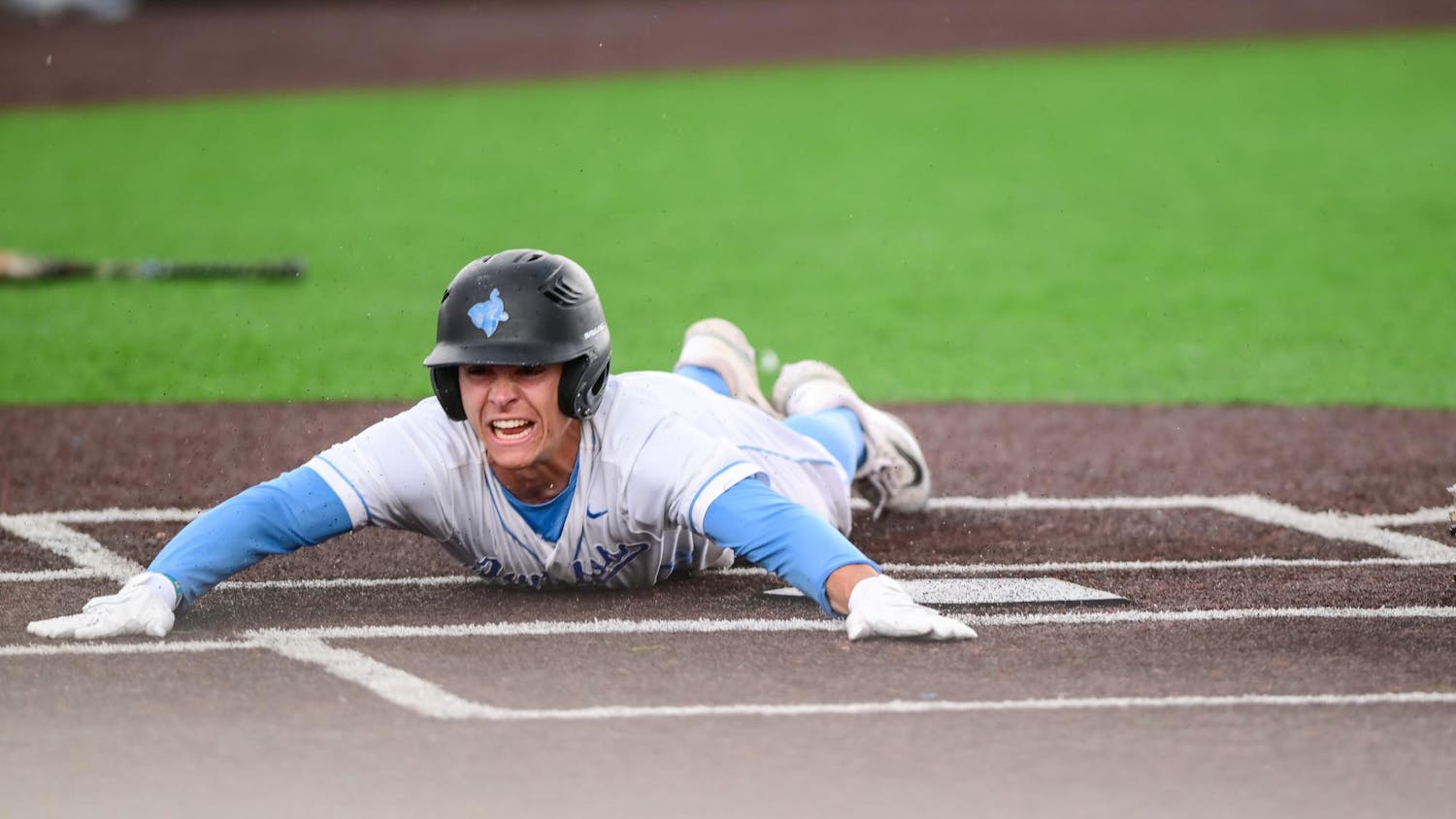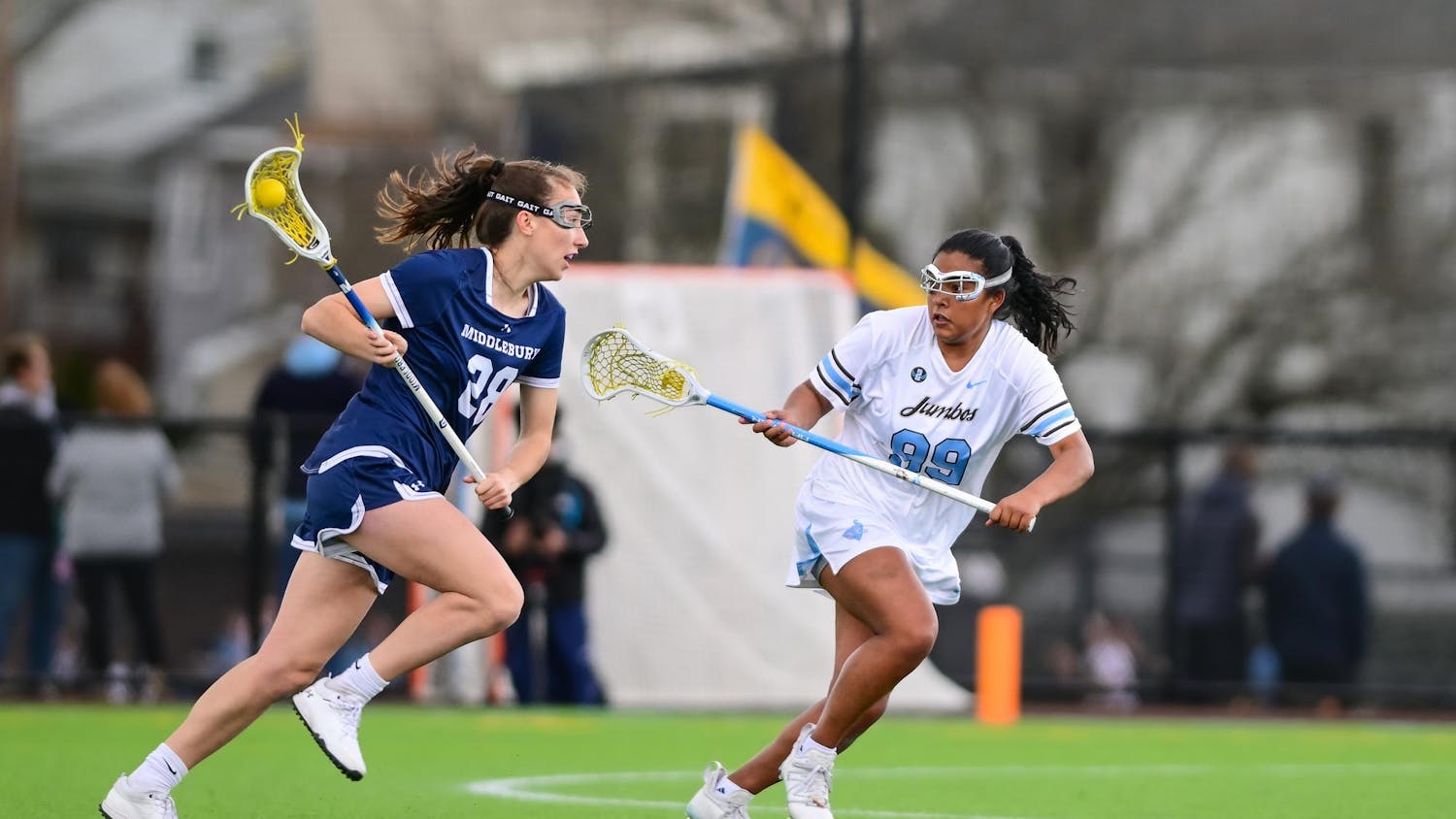On Feb. 28, 2014, Zach Lowe’s NBA column in Grantland, the destination of the best analysis and insight for the sport of basketball, introduced the casual fan to the newest sporting event: The Basketball Tournament (or TBT for short) -- an open basketball tournament in which anyone can gather their buddies, acquire enough fans through social media and compete for the $500,000, winner-takes-all prize.
“You launch it, you announce it, you tell people it’s coming. But at the end of the day, we can’t put people in the tournament,” CEO and Founder Jonathan Mugar said. “It was scary. When we first launched after that Zach Lowe article, there was only one team that signed up. It was called ‘Jane and the Dudes,’ and I don’t think they had ever played basketball before above the junior varsity level.”
Better players, however, did sign up eventually. Cornell’s 2010 Sweet 16 Cinderella team reunited to become the first team with enough fans to qualify for the tournament. Alumni from colleges, high schools and even childhood cul-de-sacs began submitting teams. Ardent basketball fans started to see the names of former college stars, fringe NBA players and streetball legends popping up.
On June 28, 2014, a team of Notre Dame alumni upset Team Barstool, a squad organized by the famous sports-blog site, 72-68 in the championship game. The match was streamed to a national audience on ESPN3 and covered by most of the big names in sports media; Mugar had his proof of concept.
The only way to explain how TBT could breach the professional sports landscape is to start with Mugar. Mugar arrived at Tufts in the mid-'90s, a local kid from Belmont Hill who had hopes of playing baseball and basketball for the Jumbos. There was just one problem: Mugar was not recruited for either team. On top of that, splitting his time between the two squads was not helping him make up for the talent gap.
“It was a challenge to be a four-year varsity athlete in two sports, but [basketball coach Bob] Sheldon and [baseball coach John] Casey were open to it,” Mugar said. “I was definitely a worse athlete for it because I was not able to focus on one sport … It wasn’t the most efficient way of doing things, but I loved competing, and I loved representing both teams.”
For Sheldon, Mugar at first seemed like he would have a non-contributing role on the court; just finding him a position was a challenge.
“He was a defensive ace that couldn’t really stop anybody,” Sheldon said. “But he couldn’t really score, so we had to give him a label.”
Despite this, Mugar found himself to be an important asset. He earned a spot in the rotation as a role player who cared little for individual stats and cherished the small facets of the game.
“He just did everything. He loved the game, he played both ends, he played hard, he knew the game and he was smart,” Sheldon continued. “[His hard work] forced me to play him.”
Tufts athletics was a testing ground for Mugar. He might have been fighting for playing time against teammates who had been handpicked out of high school, but that was part of what he enjoyed.
“I found myself surrounded by kids who were way better than me, [but] I loved the challenge of trying to play up to that level everyday in practice,” Mugar said. “Doing that over a certain time made me a much better player.”
Mugar graduated in 1998 with a degree in English and earned his Master's in Education the following year. He has kept in touch with the athletic program; he currently sits on its Board of Overseers and helps fundraise for all of Tufts' sports teams. Two years ago, when Sheldon wanted alumni to talk to his seniors about life after college and what it meant to represent the Jumbos for one last year, he brought in three former players. Two of them had put up impressive stat lines during their playing days and were a couple of the best athletes he had coached. The other was Mugar.
“Along with his stick-to-it-iveness, Jon’s loyal,” Sheldon said. “He just loves Tufts and has carried that with him after he graduated.”
Following his graduation from Tufts, Mugar headed out west to Los Angeles in hopes of breaking into the television industry. After toiling away as an unpaid intern, Mugar, true to form, worked his way up. By 2007, he was a producer of “Tim and Eric Awesome Show, Great Job!” (2007 - 2010), working with comedy giants such as Bob Odenkirk and John C. Reilly. As “Tim and Eric” grew in popularity, Mugar joined another critically acclaimed show, “Comedy Bang! Bang!,” as a producer.
After building an impressive resume, Mugar decided to pursue an entirely new endeavor. He still had a passion for basketball. Sheldon had seen players with twice his talent succumb to the demands of being a college athlete, yet Mugar stuck to it. And the love of the game runs in his family: his brother, Peter, currently serves as the head coach at Framingham State University.
At first the idea was simple: people love March Madness, so why not put it in a professional setting? However, convincing sponsors the idea would work was a problem. There was nothing like it out there, and there was no guarantee that fans would buy in.
Today, most of the disruptors of the sporting industry have tried to change the way the game is played. Daryl Morey figured teams should shoot more 3-pointers and fewer long 2-pointers. Chip Kelly decided a football team’s offense should wait a teenager’s attention span in between plays. Billy Beane made advanced math so cool in baseball that Brad Pitt played him in a movie.
Yet Mugar is more Bill Veeck than Bill James. By flipping the relationship between the fans and the athletes and giving the fans a bigger relationship with the on-court experience, he not only created a unique fan interaction, but also a business model that has already gained success. For as long as professional sports have existed, the team structure has been dominated by wealthy individuals, leaving fans with little to no power to decide their teams’ business decisions.
Mugar found an alternative.
What truly adds character to TBT, however, is what drove Mugar’s athletic career. TBT is a perpetual generator of underdog stories by providing undersized, less-talented teams with a chance to upset the NBA-caliber athletes that have long been picked ahead of them.
“I’ve always loved underdog stories ... for me, the best part of watching March [Madness] is when the underdog team surprises people,” Mugar said. “That’s what this format is really about.”
TBT has also provided comeback stories for players trying to save and revive their careers. This was most apparent in 2014 when Dahntay Jones, the star of Team Barstool and a former Duke standout, impressed NBA front offices and got himself back into the league.
“We were lucky that first year with Dahntay Jones [because] he played in the championship game, and a year later he is with the [Los Angeles] Clippers,” Mugar said. “Seventy percent of the players in TBT said they could play with people in the NBA. We give them a chance to see that.”
TBT returned this summer with lofty goals. If 2014 was supposed to prove that people would watch, 2015 had to provide evidence that it could grow.
With an even larger sense of legitimacy, the tournament grew to 97 teams and doubled its payout to $1,000,000 to draw in even bigger names. Former NBA champion Brian Scalabrine, San Antonio Spur Matt Bonner and actor Michael Rappaport put together an all-star team for Grantland. It included guards Jason Williams and Mike Bibby, who had had the most successful NBA careers of any players in the tournament. In true TBT fashion, the powerhouse Team Grantland fell to underdogs in the early rounds.
Away from the gameplay, TBT became a topic of conversation in NBA locker rooms and message boards. Bonner’s teammates on the Spurs weighed in on who he should recruit to his squad, while rumors of NBA legends like Rasheed Wallace joining a team generated considerable internet chatter.
No longer relegated to the web alone, TBT’s later rounds were broadcasted by ESPN, which saw an opportunity to show live sports during the doldrums of summer. In another close championship game, Overseas Elite defeated Team 23, 67-65.
Fans had their share of individual stories to follow. There was DJ Kennedy, who at the age of 25 had already chased his dream in the NBA D-League, Germany, Israel and Russia with just a two-game NBA stint to show for it. Kennedy shared the backcourt with Myck Kobongo, a former McDonald’s High School All-American who went undrafted by the NBA in 2013 and spent the past two years scraping a living in the D-League. In two years in the D-League, he earned a total of roughly $50,000. In seven games in TBT, he netted $107,000. Rounding out the team’s top players were Errick McCollum II, a player so overlooked in high school that he ended up at Goshen College in the NAIA. Even after proving himself as a dominant scorer in Greece and China, he continued to be overlooked by American fans -- until he started zooming past defenders in TBT.
What made the Overseas Elite remarkable, however, was how similar it was to other TBT teams. Former local heroes once again wound up in the sports section of their hometown newspapers. Tournament stars began getting invitations to join NBA Summer League teams. The once-forgotten athlete, the trope of countless sports movies, popped up all over the place, making each game a battle between players clawing for a huge payout and their chance to finally play on center stage.
So how did a former Div. III walk-on go from producing beloved comedy shows to getting a sporting event on ESPN? And how did he do so with limited connections to the NBA and fewer eager sponsors?
If you look at Mugar, the answers make sense. College athletics usually introduce former high school stars to a world where they are no longer the best on the team at what they do, and the entertainment industry is littered with talented and hardworking people who have fallen short. Whether he was on the court defending players bigger, stronger and faster than he was or trying to get zany comedies a large television audience, Mugar has never appeared afraid of failure or of falling short.
The Basketball Tournament is not just the result of passion for basketball and good entertainment; it is an event for the underdogs, those who take on the role that Mugar has long cherished. It was that way in the beginning. There was no prior proof that it would work, and there was no precedent to follow.
Mugar’s faith in the tournament has grown since its inception. He cites the three teams from the Drew League -- the legendary pro-am league from Los Angeles -- as further proof of TBT’s inclusion in summer ball lore. His short-term vision includes bigger names, more televised games and a larger fan base.
Get Mugar talking about where TBT can go, however, and it becomes clear that he sees no limit to its potential. He envisions payouts rivaling an NBA team’s salary cap, rosters rolling out to great fanfare and questions of cities' basketball supremacy being answered on the court.
“I believe that in 2025, the TBT champion will be able to play with any team from the NBA in a real, competitive game,” Mugar said. “I believe our format in 10 years from now will be the number one way to find the best basketball team in the world.”
Sensing the interviewer’s awe on the other end of the phone, Mugar lets out a friendly laugh.
“How’s that for bold?”
More from The Tufts Daily





